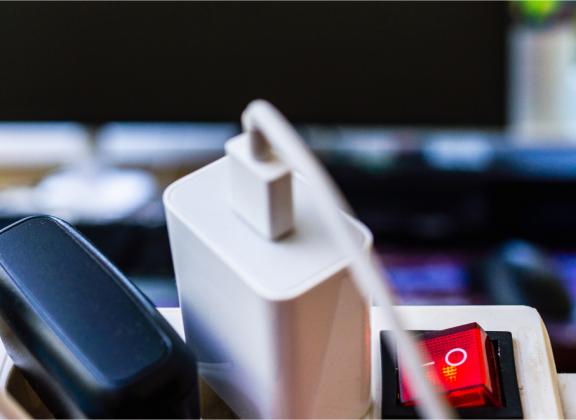As home entertainment systems evolve, IPTV boxes and media players have become central to how people access television, movies, and online content. But with constant connectivity and long hours of use, these systems can contribute to significant electricity consumption. For environmentally conscious users and those looking to reduce household energy bills, it’s important to understand how to manage the power demands of modern IPTV setups efficiently. This article outlines expert strategies to lower energy usage without compromising your viewing experience or device performance.
Evaluating the Power Consumption of IPTV Systems
To effectively reduce energy usage, it’s helpful to first understand the consumption dynamics of your IPTV system. A typical configuration includes an IPTV or streaming box, a TV or monitor, a router or modem for network access, and often supplemental devices like audio systems, wireless keyboards, or external storage. While each component may use only a small amount of power individually, the combined effect over long periods—especially when devices are left running continuously—can be substantial.
IPTV devices vary widely in their energy needs. Lower-cost units often lack advanced power-saving features, while high-performance players with features like 4K support, voice control, and HDR output can be more demanding in terms of energy. Additionally, the television used with the IPTV box—particularly large-screen models with high brightness settings—often consumes more electricity than the box itself.
Selecting Devices with Better Energy Efficiency
One of the most impactful decisions you can make involves choosing energy-efficient hardware. Modern IPTV players often come with energy-conscious design elements, such as passive cooling, optimized processors, and power-saving chipsets. Look for models certified for low energy consumption or those advertised with eco-modes and smart standby features.
Devices running lightweight operating systems, such as Google TV or Android TV, tend to include better software-based energy controls. Regular firmware updates are also a plus, as manufacturers often include improvements that reduce background activity and enhance sleep behavior. Paying attention to power consumption ratings during purchase can save you energy costs over the device’s entire lifecycle.
Reducing Idle Power Usage
A major contributor to unnecessary electricity use is how IPTV systems operate when not actively in use. Many users leave their devices in standby mode under the impression that it’s efficient. However, depending on the device, “standby” can still involve active processes such as background app updates, streaming previews, or voice assistant readiness.
Turning off your IPTV box completely when not in use is a simple yet effective way to cut power consumption. Smart power strips or app-controlled plugs can help automate this process, allowing the entire entertainment center to power down on a schedule. Also, most IPTV devices allow users to adjust sleep settings—configuring shorter idle timers or disabling instant-on features can significantly reduce energy waste.
Network and Accessory Optimization
It’s not just the IPTV box that consumes power—other elements of your setup can have a surprisingly large impact. Your router, for instance, operates continuously and often supports more than just your IPTV stream. If possible, choose a router with energy-saving capabilities or set it to reduce bandwidth and signal strength during periods of low activity.
External drives, especially older models with spinning disks, draw power even when idle. Replacing them with SSDs or accessing cloud-based storage can lower your system’s overall footprint. Similarly, turning off unused peripherals like Bluetooth accessories, ambient lighting, or audio systems ensures that your setup doesn’t draw more power than needed.
Making Smart Choices About Viewing Habits
Technical adjustments alone aren’t enough—how and when you use your IPTV system also affects energy consumption. Streaming in ultra-high definition (4K or 8K) increases the load on every component in the chain, from the box to the TV to your network infrastructure. For everyday content like news, music videos, or talk shows, lowering the resolution to Full HD or even standard definition can save both bandwidth and energy.
Adjusting screen brightness, disabling unnecessary visual effects, and using sleep timers on your TV also contribute to lower electricity use. Over time, adopting conscious habits like avoiding overnight streaming or turning off the system between sessions can have a meaningful cumulative effect.
Using Smart Home Integration for Efficiency
Incorporating IPTV devices into a smart home ecosystem can streamline energy management. Smart outlets, home hubs, and consumption monitors make it easy to track and control power usage in real time. Many of these tools allow you to set rules—for example, automatically turning off the IPTV box after a certain hour or when no motion is detected in the room.
Voice assistants can also help by making it easier to turn off multiple components with a single command. Over time, these small improvements make a big difference, ensuring that power is only used when it’s truly needed, without sacrificing comfort or entertainment quality.
A modern IPTV setup delivers convenience, entertainment, and a connected experience—but it also has the potential to become a silent contributor to high energy consumption. Fortunately, with the right mix of efficient hardware, thoughtful configuration, and smart user habits, it’s possible to enjoy all the benefits of digital streaming while keeping your electricity use under control. Whether you’re motivated by cost savings or a desire to lower your environmental impact, optimizing your IPTV setup is a smart and simple step in the right direction.
